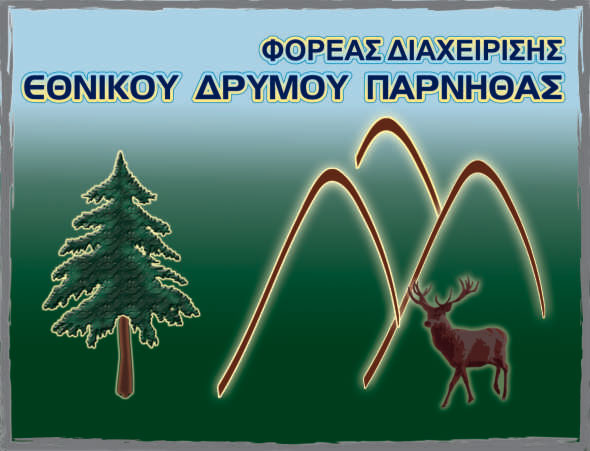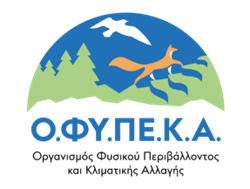Ancient Monuments
Parnitha, in addition to its interest as a mountain ecosystem, is also of wider interest, due to the existence of a series of archaeological sites that are evidence of all the historical development of the area.
In ancient texts Parnitha first appears in the year 423 BC. in the Clouds of Aristophanes (323 BC) “See now a tree towards Parnith already gar ous descending quiet them”. The Rhodian Law Antiphanes (405-333 BC) calls it Parnith in his work “outside the tree bearing the whole Parnith”. The philosopher Theophrastus after the death of Aristotle (323 BC) in his book “On signs, waters and spirits” writes about Parnitha, Vrilisson and Hymeton “. Pausanias around 150 BC. in Attica he mentions: “Mountains of the Athenians are in Pentelikon in stone-cutting and Parni provided Thiran of all savages and ungodly, and Hymetus is the most skillful bee except the arrogant”. The sophist Lucian (120-180 AD) in his work Menipus which is also the first science fiction novel in the world states: “from Parnithos or from Hymetas to Geraneia then”.
The archeological sites that have been recorded in the area of Parnitha in which archaeological remains were found are the following:
- Foundations of a large building with jars at Keramidi in Bafi (Kryoneri Settlement)
- In the area of Agia Paraskevi, next to the new road, traces of fire and classic shells were observed. (Autopsy by M. Petropoulakou and the surveyor N. Havakis in June 1972).
- South of the mountain Tribe at an altitude of 690 m., Ruins of Agia Paraskevi. Traces of an ancient settlement, cemetery and temple have been found in the area.
- Below the fortress of the Tribe, traces of car wheels can be seen on a part of the culvert road that is considered to belong to the work of Andrianos.
- At Kokkini Lakka, on the right bank of the river Goura, A. Kordellas found many tiles and bricks from an ancient aqueduct.
- Traces of an ancient house have been found in the area of Agia Paraskevi at the site of Paliochori-Roumani at an altitude of 756 m.
- 20 minutes northeast of the fortress of the Tribe, near the church of Agia Paraskevi, the excavations of A. Skias revealed the ruins of the settlement that extended towards the ravine and in the direction of the fortress. Many buildings were found, others public and many divided into rooms. In the ravine near the source was the cemetery of classical times. Temple foundations were also found. The ruins date back to the 5th and 4th century BC. A. Skias raises the dating of the settlement of the Tribe to prehistoric times based on pieces of hand-made millstones made of rough stone that he found and that look like prehistoric ones.
- Remains of foundations are found between the mountain peaks Zonia and Keramidi, east of the river Goura.
- At the bottom of the steep ravine of Goura is the cave of Panos. Investigated by A. Skias. Middle Helladic shells, many Mycenaean vessels, a geometric shell and a few black ones were found. From the 5th century there is a cult of Panos and the Nymphs.
- A short distance from the highest peak of Parnitha, a cave was excavated. Many objects from the geometric era were found and a larger number of archaic (6th century) as well as Roman lamps. Also a number of iron blades and 5 bronze sacrificial knives. We may have one of the altars of Zeus mentioned in the literary tradition on Parnitha.
- North of Tatoi airport, in the area of the building company “Floga”, where the inscriptions related to the Acharnian aqueduct were found, remnants of house walls, tiles and shells of Roman times, which will belong to a small settlement, can be seen on the surface. There is plenty of water in the area.
- Around the church of Zoodochos Pigi, square arched stones from ancient buildings and a large number of shells were observed by Th. Arvanitopoulou. Also 150 m northeast of the church was found a variety of material that belongs to a bathroom and probably nearby there was a high school.
- At Paleokastro, a part of the prehistoric polygonal wall and traces of a retaining wall of a road are preserved in the northern and northwestern part of the hill. Shells and a pseudo-mouthed amphora have been found at this site. In the courtyard of the wall to the east are the foundations of a building, probably the headquarters of King Agidos. T. Thassos considers that on the hill of Paleokastro was the fortification of the Peloponnesians.
- At the top of Beletsi at an altitude of 840 m. In northeastern Parnitha (ancient name was Felleus) there are many ancient tiles.
- Inside the church of Agios Nikolaos, which is identified with the chapel of Agia Sotira, in the area of Loutro Acharnon, which is built on a low hill, were found three ancient capitals, which were also used in the Christian columns. One dates to the Hellenistic or Roman period and the others date to the early classical times. To the north of the church was found the base of an Ionic column. On the walls of the temple there are many ancient marbles, while throughout the surrounding area scattered ancient members were observed, such as a sarcophagus slab, a column vertebra with grooves around it and a piece of large votive relief in which the lower part of a seated form is preserved. , smaller than life size, who stepped on a footstool and wore a long tunic. Her attitude was strongly reminiscent of Apollo of the Parthenon frieze. The Ionian capitals and other architectural members would probably belong to an ancient temple of classical times, which could theoretically be attributed to the worship of Apollo.
- In the place of Lykotrypa, near Acharnes, in the immaculate, vaulted tomb of the Mycenaean years found in this area, in addition to pottery, jewelry made of gold, silver, copper, glass, faience and ivory were collected. One of the most important finds is one of the two ivory lyre found, the one that is best preserved and is one of the earliest of its kind with embossed sphinxes at its base. Also an ivory complex, with two oppositely placed sphinxes and an ivory cylindrical compass (jewelry box) with embossed horse decoration in two zones. The cap of the compass is decorated with four (4) chamois in a radial arrangement.
- At Paleochori, an excavation carried out brought to light Byzantine walls and numerous shells, some of which were externally glazed. There were also traces of an ancient settlement at Borsi, on the spot where a small half-built church of Byzantine or post-Byzantine times is located today. Several traces of foundations of ancient walls were found between the mountains Keramidi and Kyra. On the right bank of the Goura stream at Kokkini Lakka, traces of tiles and bricks of an ancient aqueduct were observed. Near Agia Triada, in the place Xero Livadi or Xerolivado, in 1833, indications of ancient intensive cultivation were observed. Besides, the name Paleochori, near the homonymous source, shows that there was probably an ancient settlement here as well.
The above archeological sites mainly concern sites that are located within the boundaries of the National Park, but there are others that are outside, but very close to them such as the following:
- Northeast of the village of Hassia at the foot of Mount Keramidi, in the churches of Agia Kyriaki and Agios Nikolaos, A. Skias undoubtedly observed the remains of an ancient municipality. From here the road to the Tribe passed, bypassing the hill of Prophet Elias to the east.
- Northwest of the village of Kakosalesi, the place called Megali Lakka is mentioned as a place with remarkable traces of settlement. In the ruins of the church of Agios Nikolaos (a quarter northwest of Megali Lakka) was found a votive inscription in Dionysos Avloneas.

